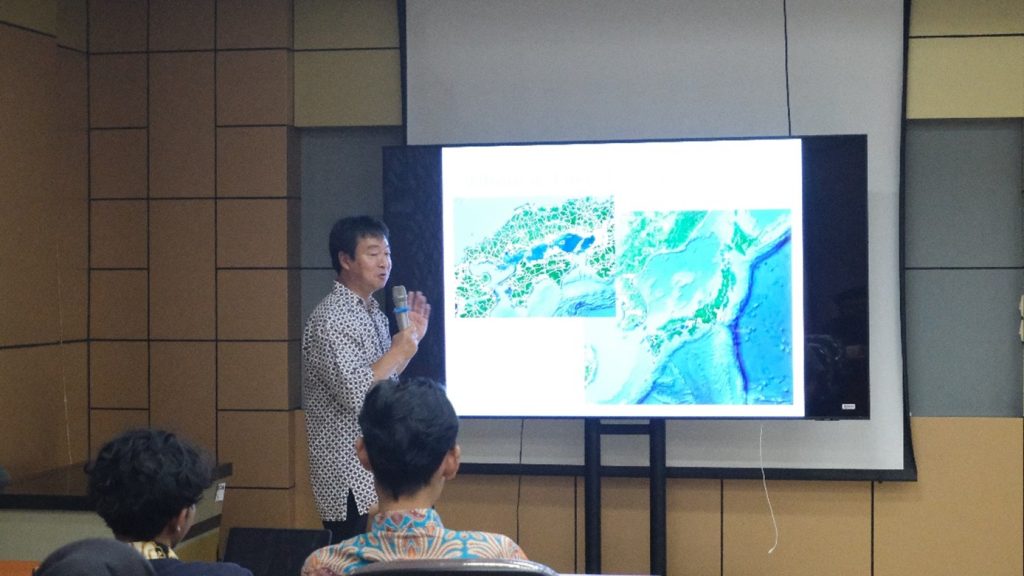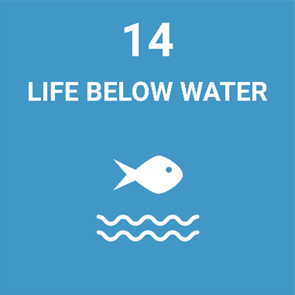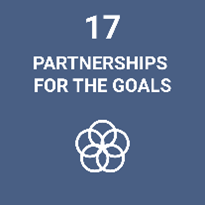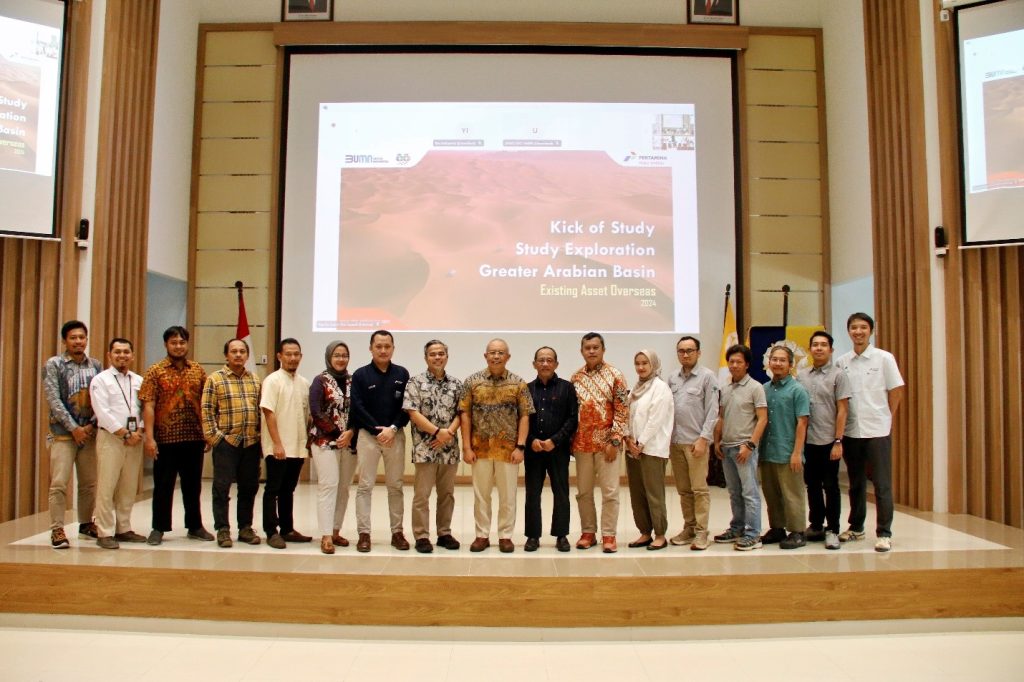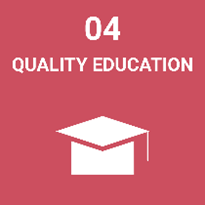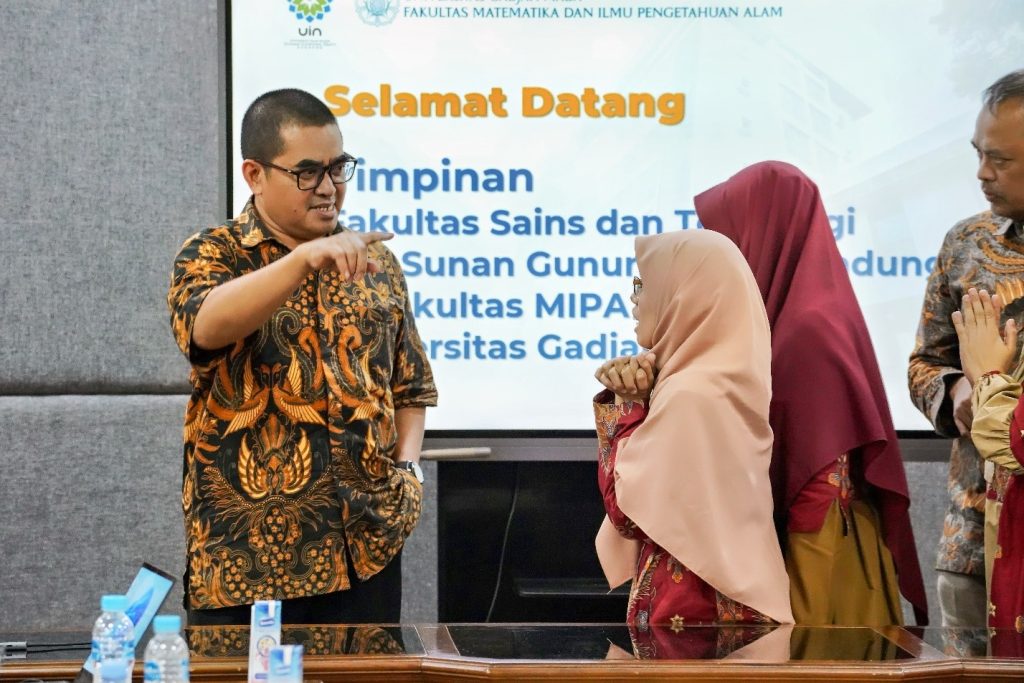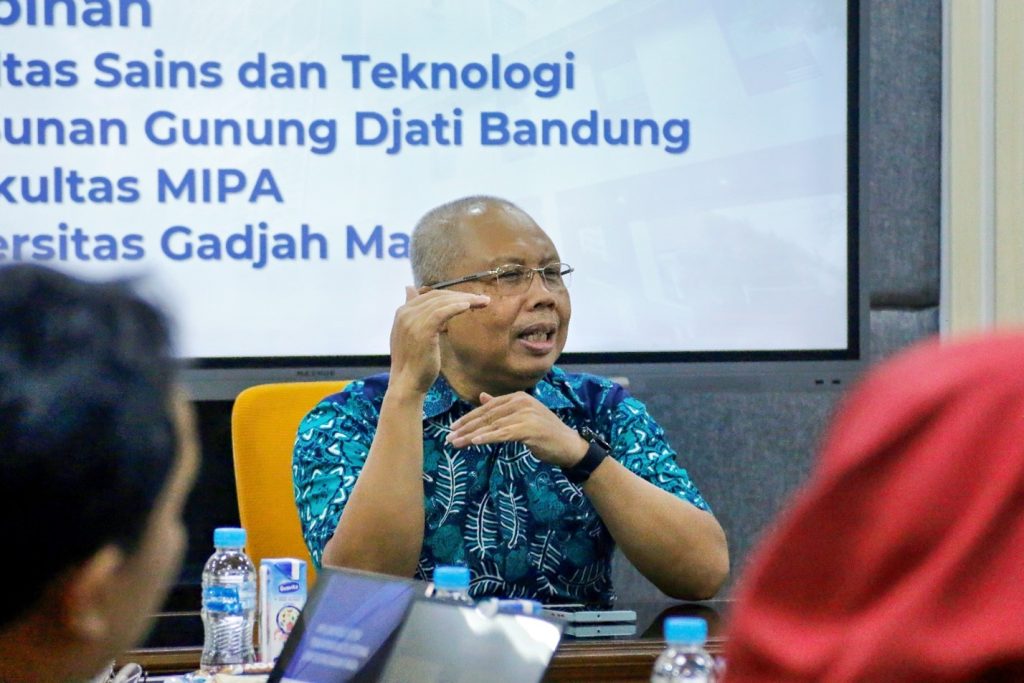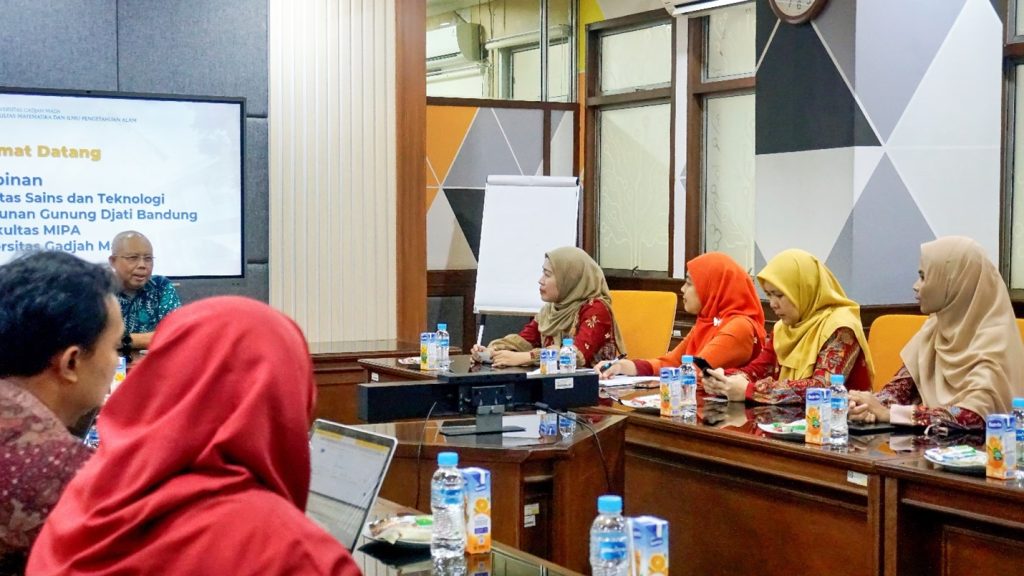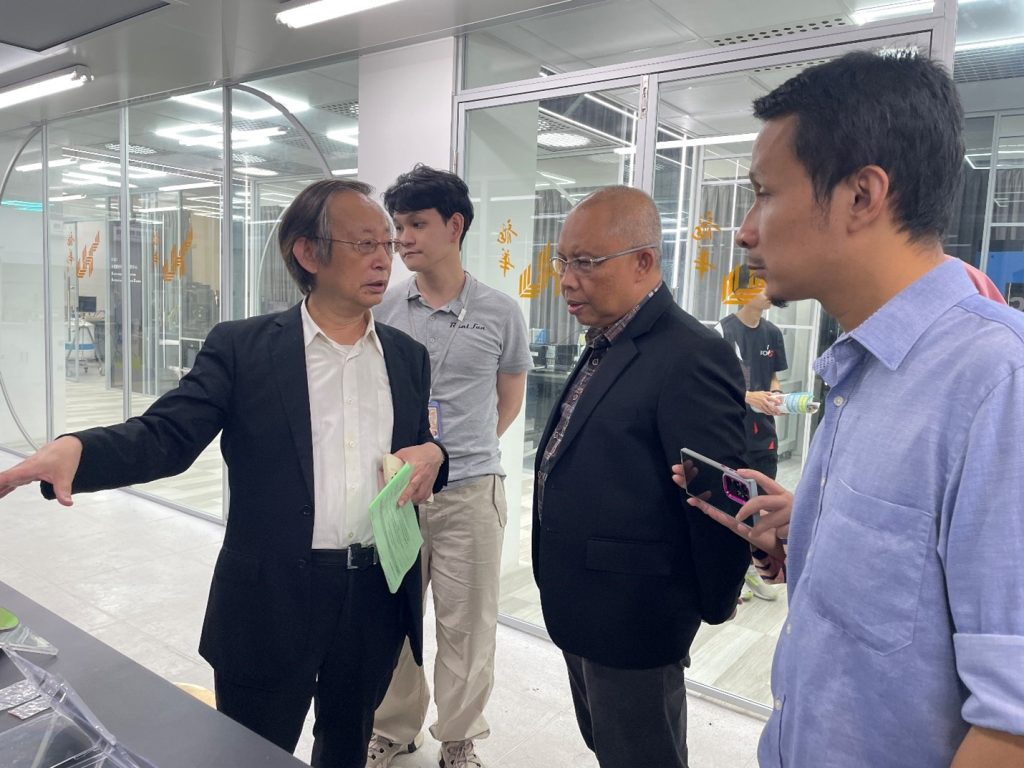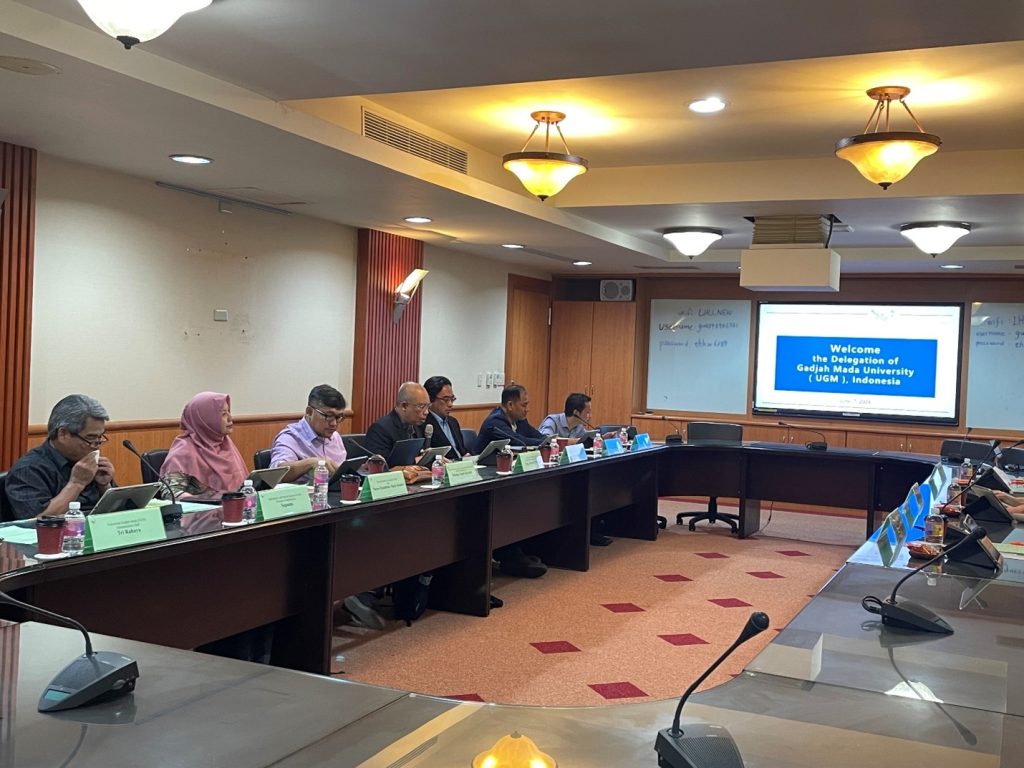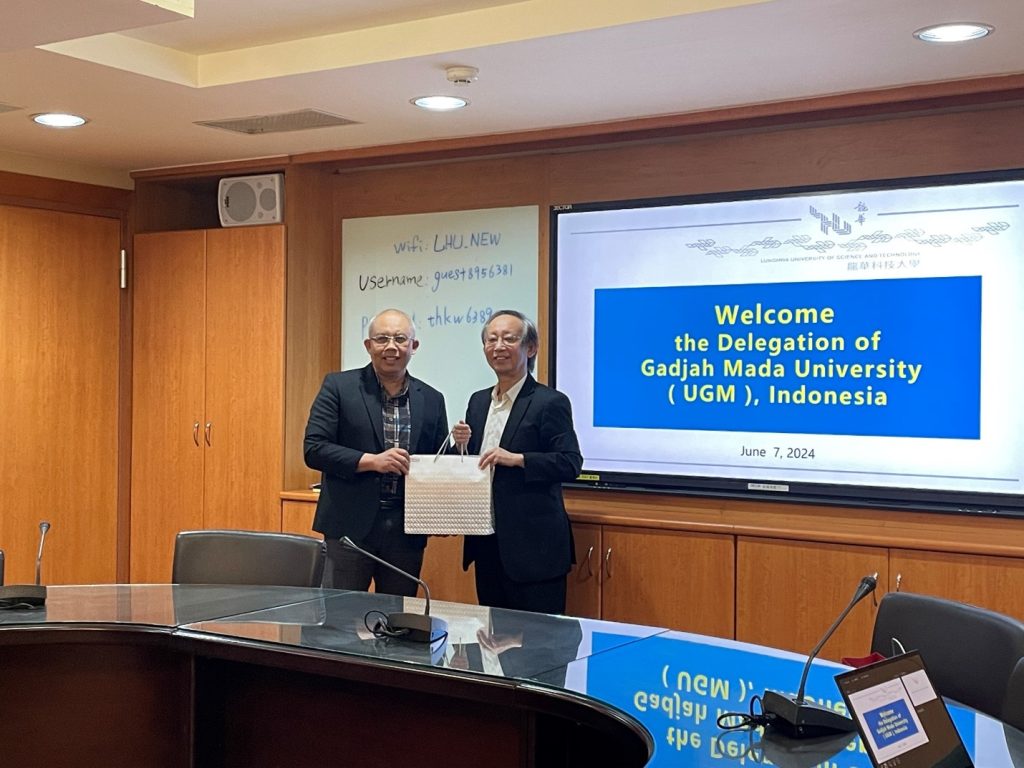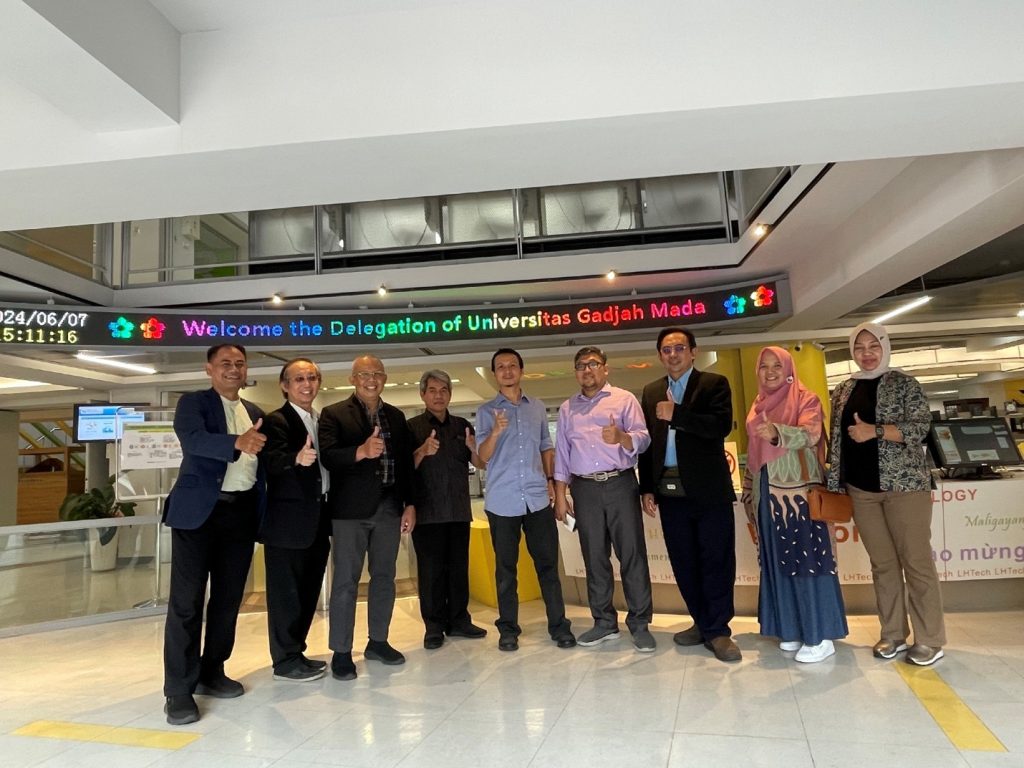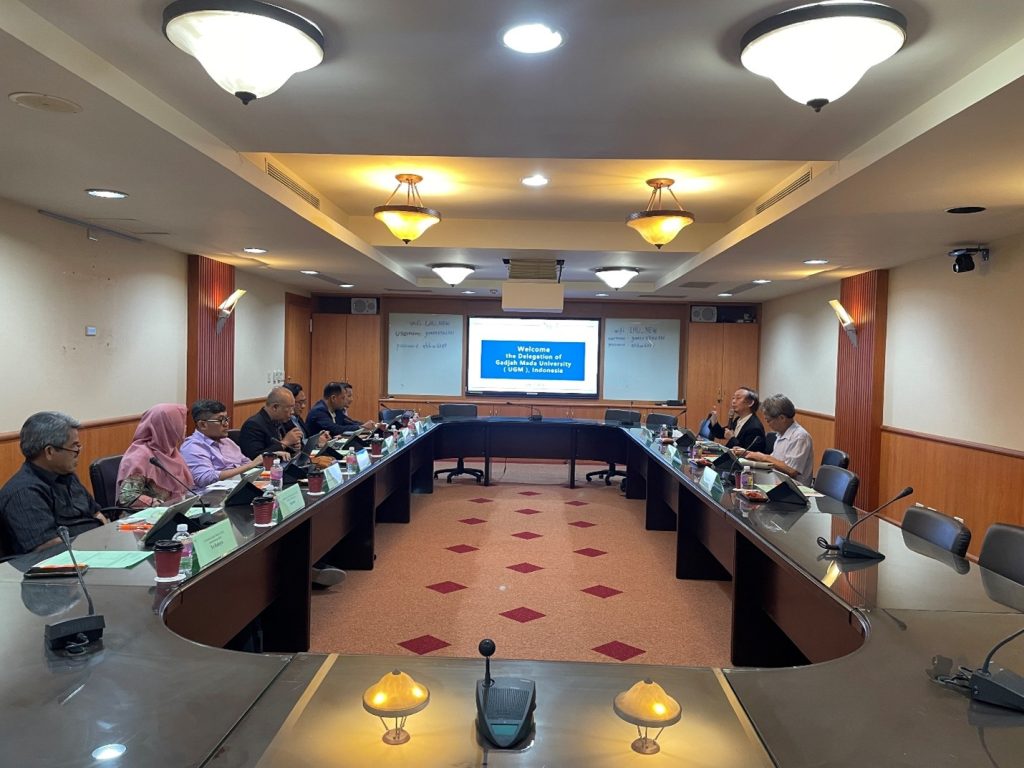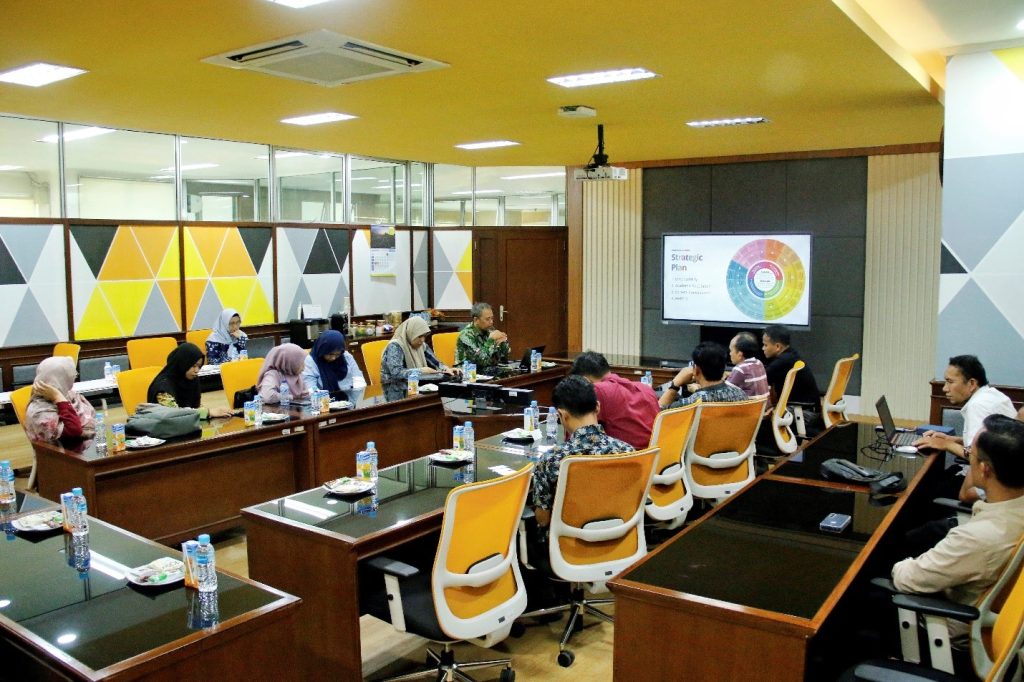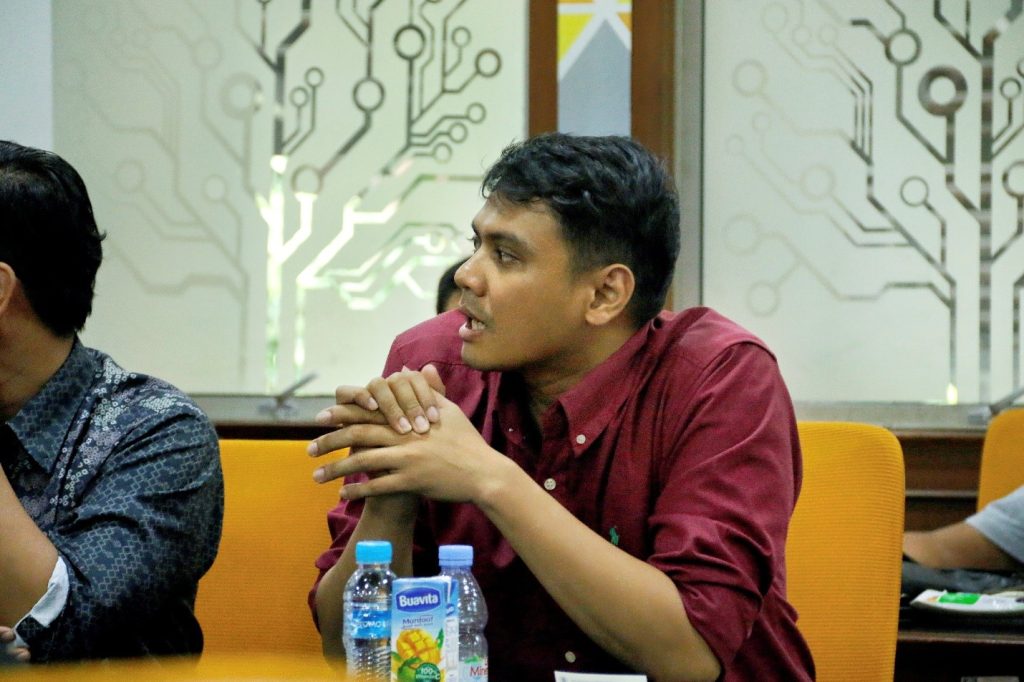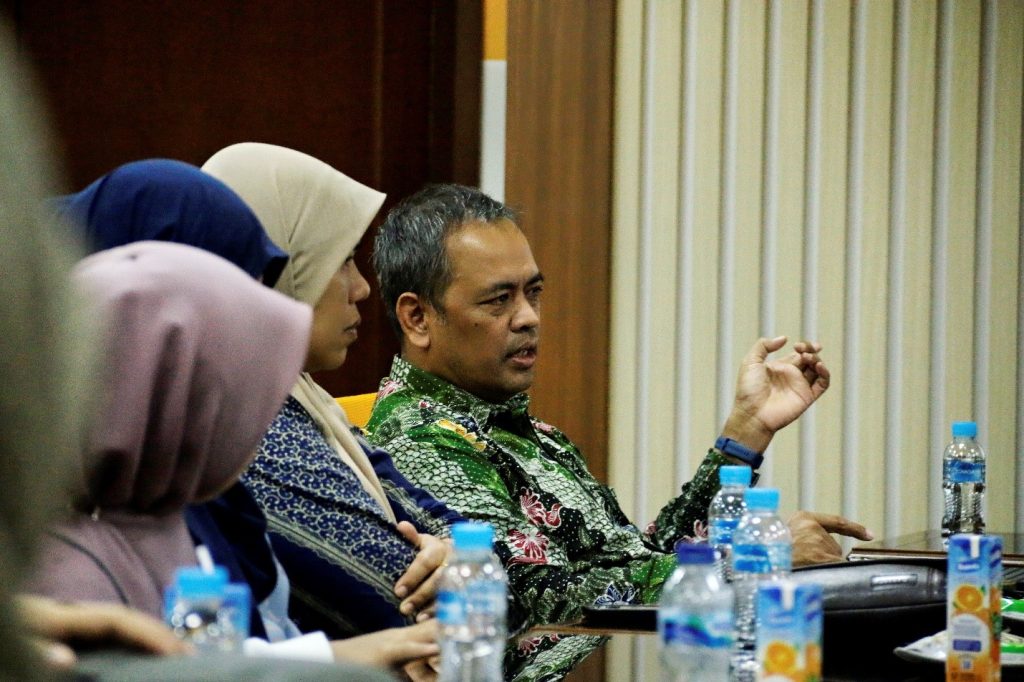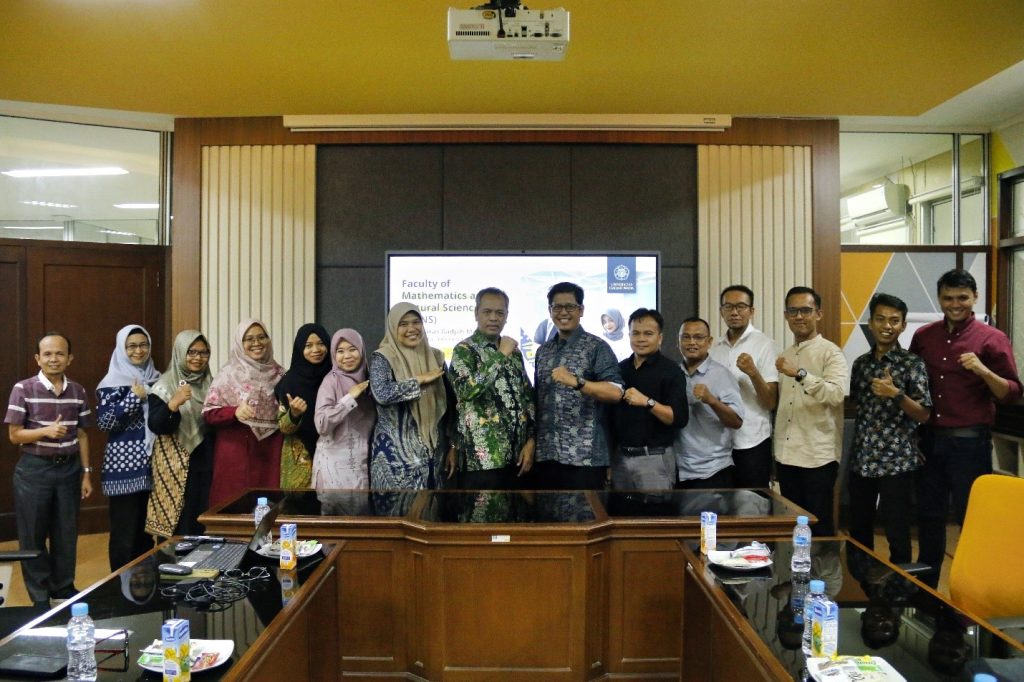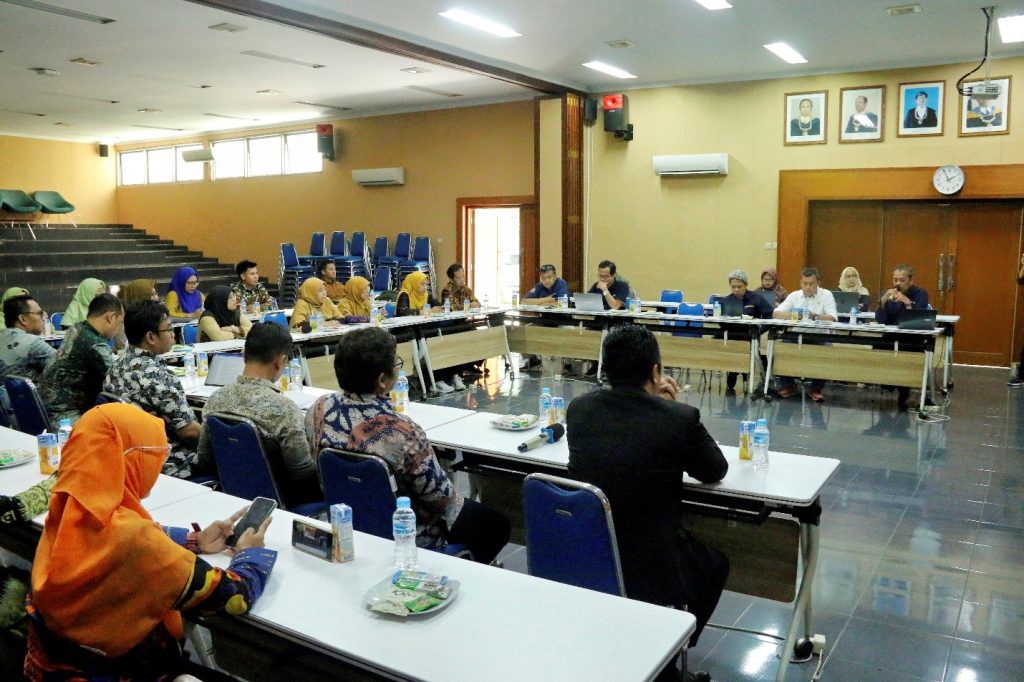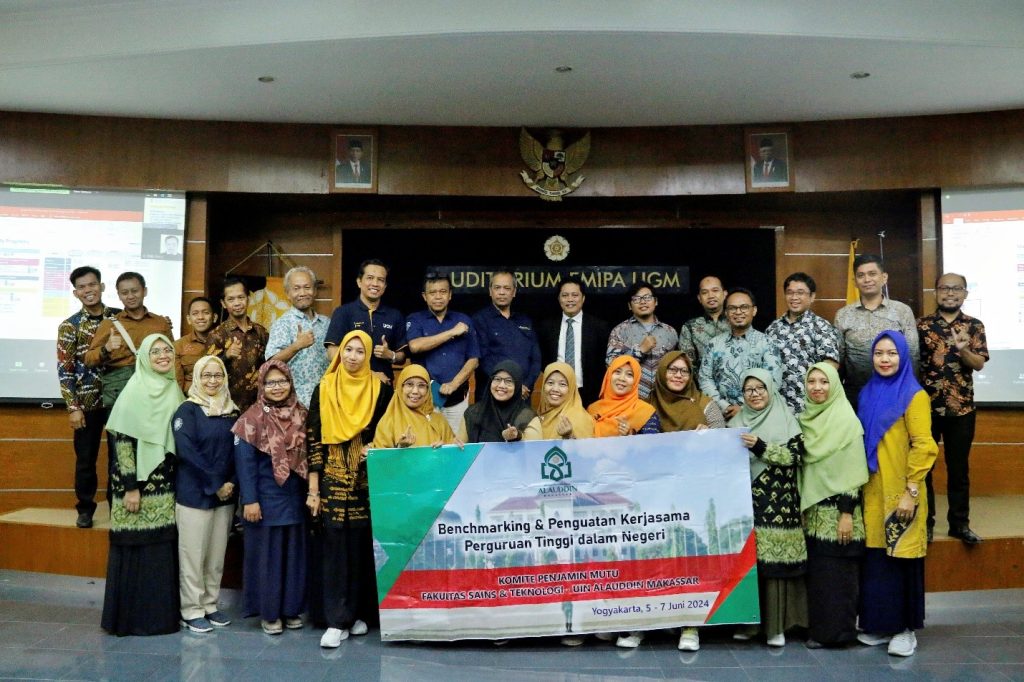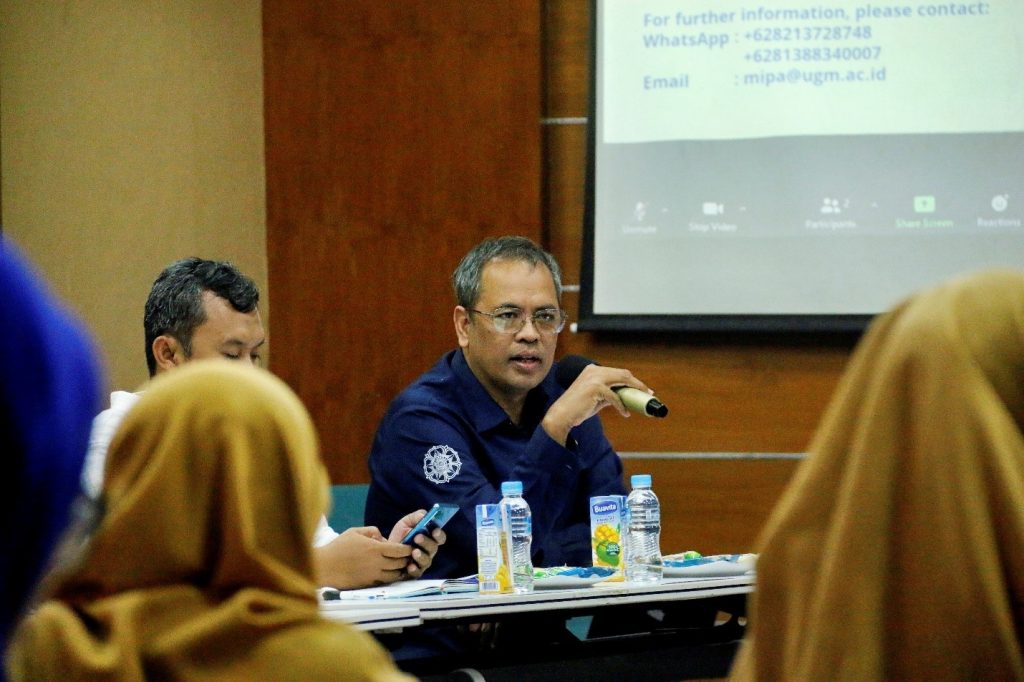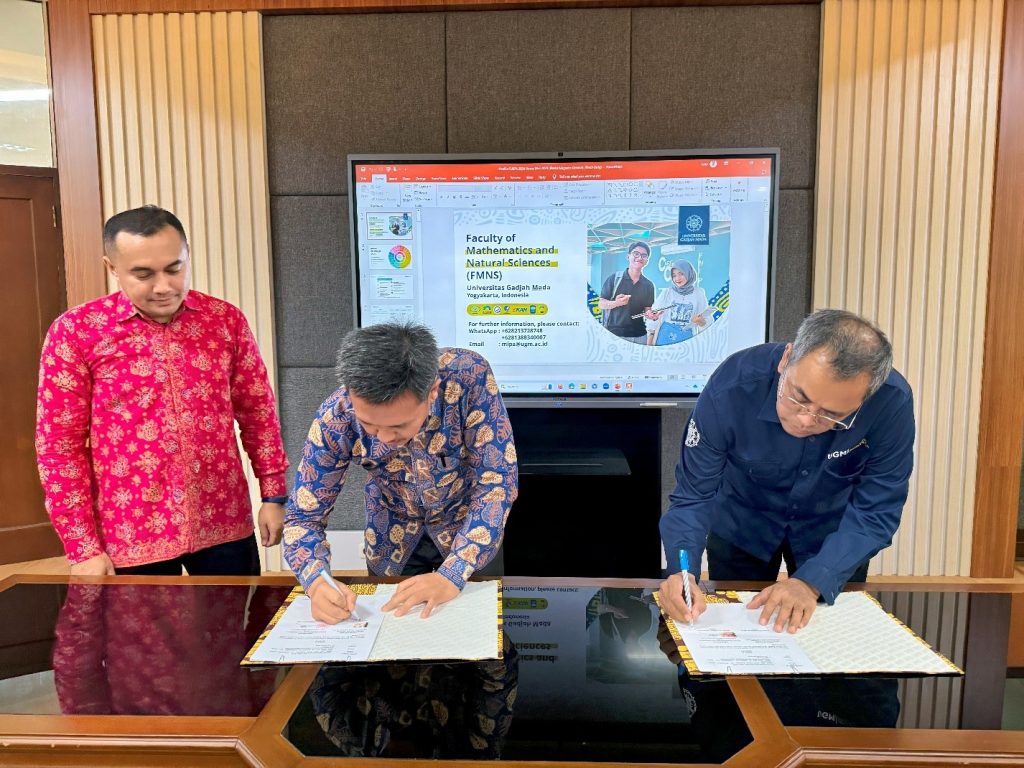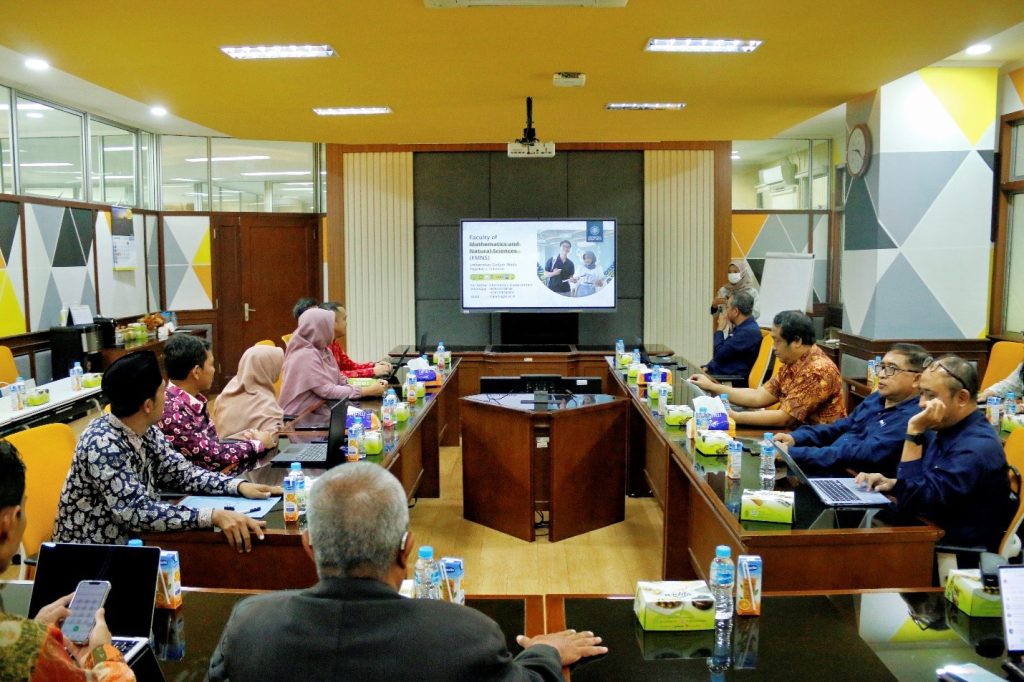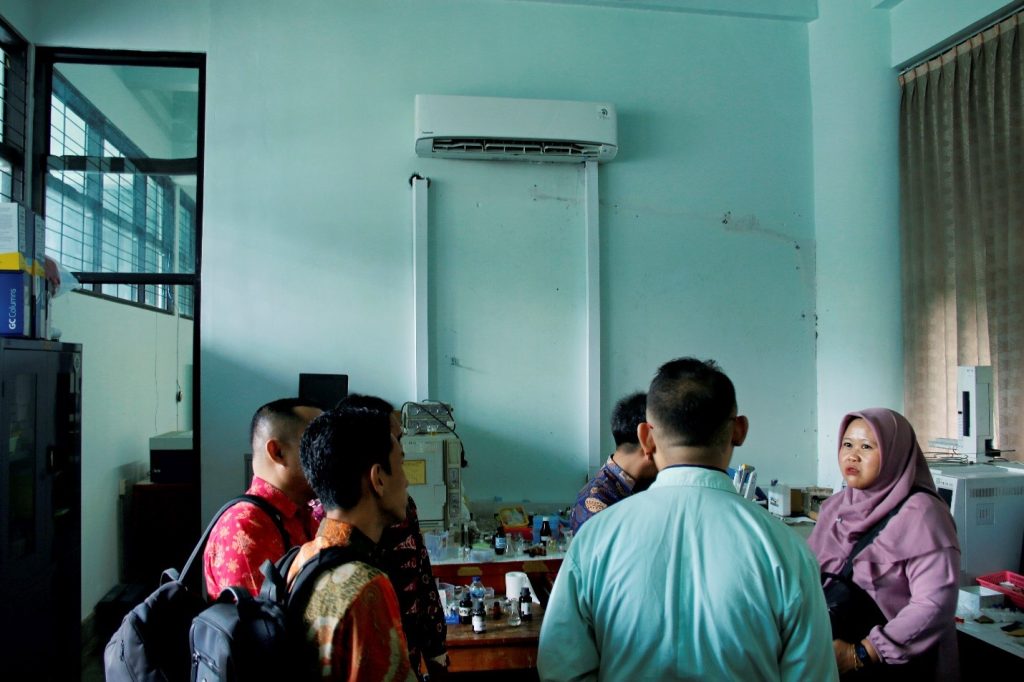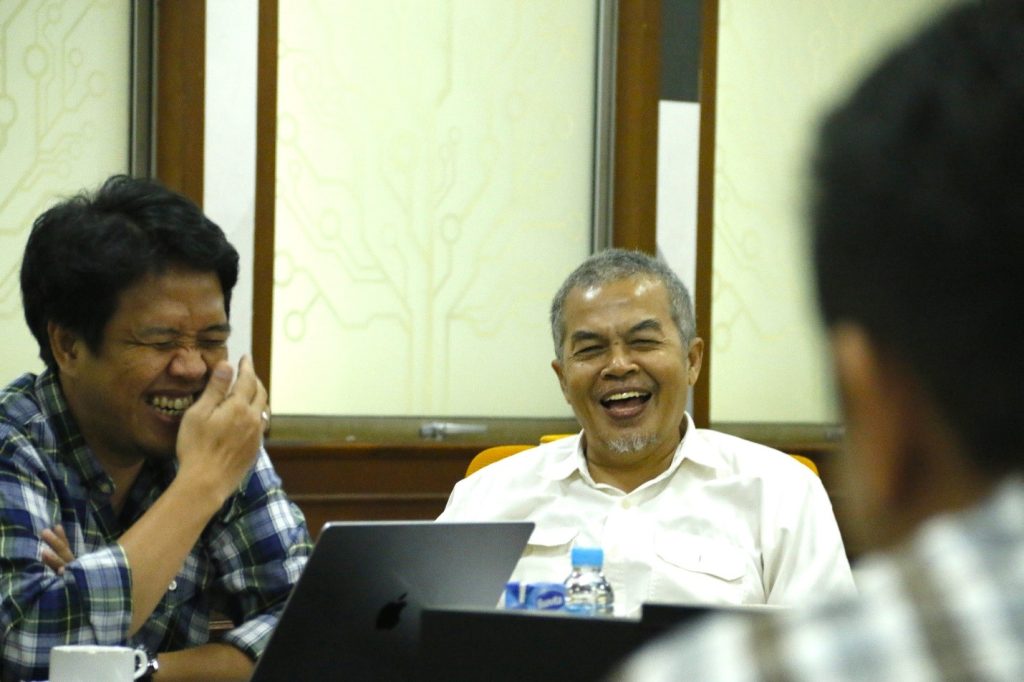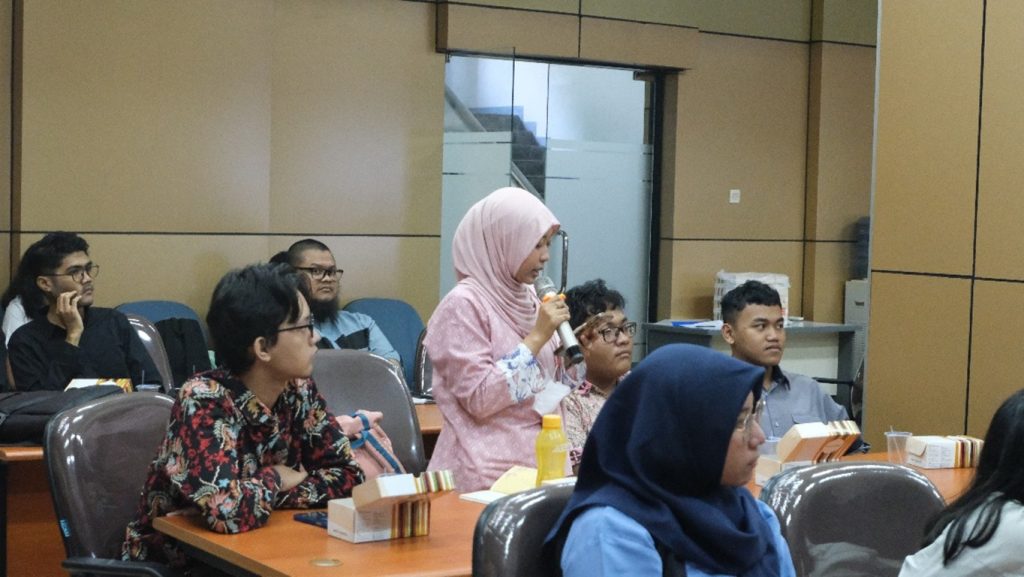
Darurat Mikroplastik di Lingkungan, Kimia FMIPA UGM Gelar Kuliah Tamu Internasional dengan Pakar dari Universitas Tokushima
Mahasiswa bertanya saat sesi diskusi berlangsung (Foto: Damar)
Departemen Kimia, Fakultas Matematika dan Ilmu Pengetahuan Alam (FMIPA) Universitas Gadjah Mada (UGM) menyelenggarakan kuliah tamu internasional pada hari Selasa, 25 Juni 2024 di Ruang Seminar Departemen Kimia UGM. Acara ini menghadirkan 2 pakar terkemuka dari Universitas Tokushima, Jepang, yaitu Assoc. Prof. Kei-Ichiro Murai dan Assoc. Prof. Hitoshi Mizuguchi, yang memaparkan topik terkini dan relevan dalam bidang ilmu material dan analisis lingkungan.
Assoc. Prof. Kei-Ichiro Murai membuka sesi dengan presentasi bertajuk “X-ray Analyses for Material Science”. Prof. Murai mengupas berbagai teknik analisis material menggunakan sinar-X, menjelaskan bagaimana sinar-X mampu mengungkap struktur dan komposisi material pada tingkat atomik. Pengetahuan ini sangat penting dalam pengembangan teknologi baru dan material yang lebih efisien.
Assoc. Prof. Kei-Ichiro Murai menyampaikan materi “X-ray Analyses for Material Science”
Selanjutnya, Assoc. Prof. Hitoshi Mizuguchi membawa para peserta menyelami dunia mikroplastik di udara melalui materi “Analysis of Airborne Microplastics by Pyrolysis-Gas Chromatography-Mass Spectroscopy”. Prof. Mizuguchi memaparkan metode analisis mikroplastik di udara menggunakan teknik pirolisis-gas kromatografi-mass spektroskopi. Teknik ini membantu dalam mendeteksi dan menganalisis partikel mikroplastik yang semakin banyak mencemari lingkungan, terutama di udara perkotaan.
Assoc. Prof. Hitoshi Mizuguchi memaparkan materi “Analysis of Airborne Microplastics by Pyrolysis-Gas Chromatography-Mass Spectroscopy” (Foto: Damar)
Kuliah tamu ini dimoderatori oleh Dr. Suherman, pakar kimia lingkungan dari UGM. Dalam moderasinya, Dr. Suherman menekankan pentingnya kolaborasi internasional dalam penelitian ilmiah dan bagaimana pengetahuan yang dibagikan oleh para pakar dari Universitas Tokushima dapat membantu UGM dalam mencapai tujuan penelitian yang lebih tinggi.
Lebih dari itu, acara ini memiliki relevansi yang kuat dengan beberapa Tujuan Pembangunan Berkelanjutan (SDGs). Materi tentang analisis material oleh Prof. Murai berkontribusi pada SDGs 9 (Industri, Inovasi, dan Infrastruktur) dengan mendorong penelitian dan inovasi di bidang teknologi material yang ramah lingkungan dan efisien.
Presentasi Prof. Mizuguchi tentang mikroplastik berhubungan langsung dengan SDGs 14 (Kehidupan di Bawah Air) dan SDGs 15 (Kehidupan di Darat). Analisis dan deteksi mikroplastik sangat penting untuk mengatasi polusi plastik yang mengancam ekosistem laut dan darat.
Kegiatan ini juga mendukung SDGs 17 (Kemitraan untuk Mencapai Tujuan) melalui kolaborasi internasional antara UGM dan Universitas Tokushima. Pertukaran pengetahuan dan pengalaman ini memperkuat jaringan akademik global dan mendukung pencapaian SDGs secara kolektif.
Penulis: Damar Novi Pradityaka
Fotografi: Roory Zaky Hasya
Editor: Febriska Noor Fitriana
